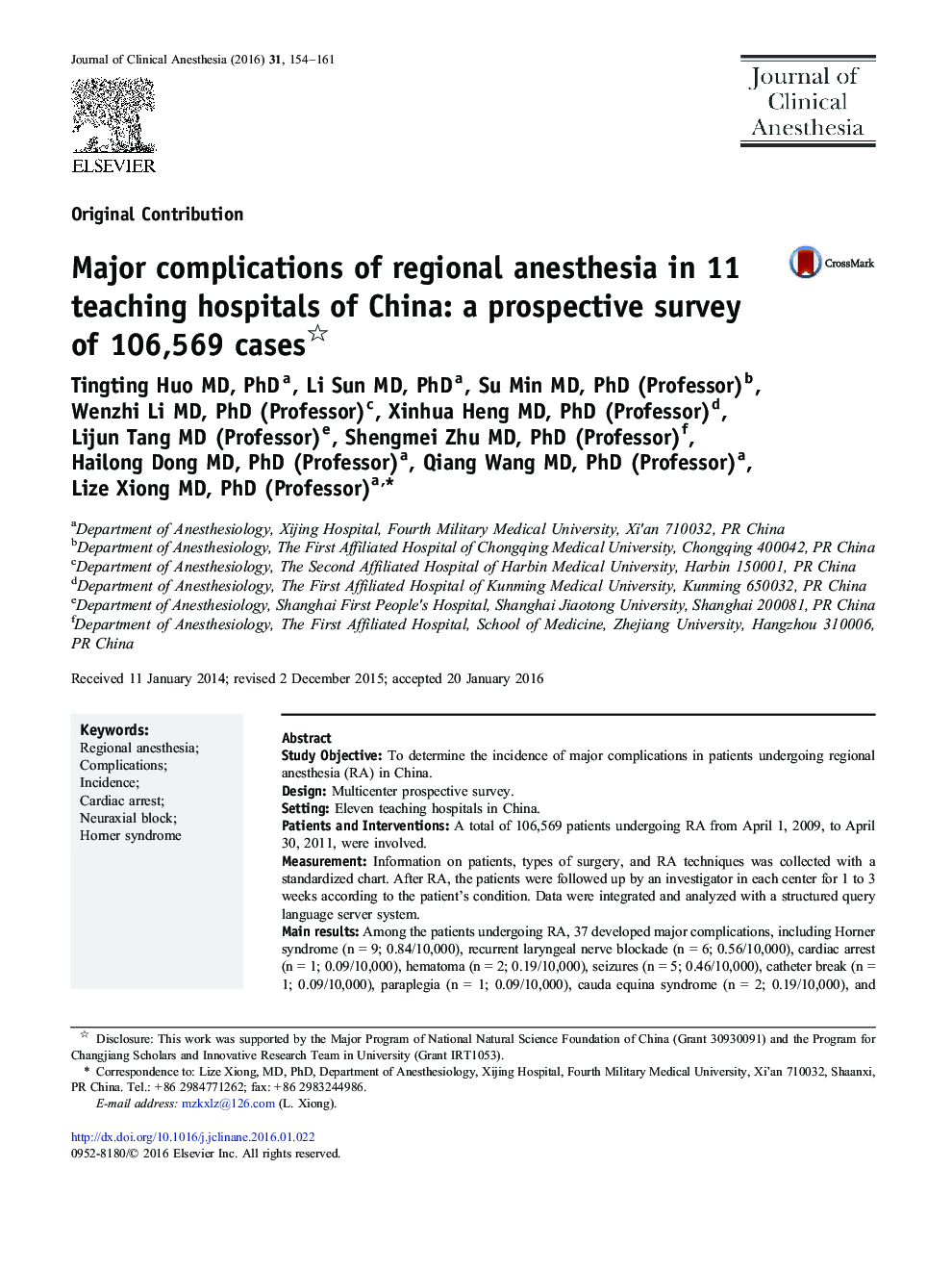| Article ID | Journal | Published Year | Pages | File Type |
|---|---|---|---|---|
| 5884668 | Journal of Clinical Anesthesia | 2016 | 8 Pages |
â¢Thirty-seven of 106,596 patients undergoing regional anesthesia developed major complications.â¢The incidence varied from 0.8/10,000 to 18.8/10,000 among centers.â¢The most complications were extensive neuraxial block and Horner syndrome.â¢The cardiac arrest was rare (1 case) but challenging and distressing.
Study ObjectiveTo determine the incidence of major complications in patients undergoing regional anesthesia (RA) in China.DesignMulticenter prospective survey.SettingEleven teaching hospitals in China.Patients and InterventionsA total of 106,569 patients undergoing RA from April 1, 2009, to April 30, 2011, were involved.MeasurementInformation on patients, types of surgery, and RA techniques was collected with a standardized chart. After RA, the patients were followed up by an investigator in each center for 1 to 3 weeks according to the patient's condition. Data were integrated and analyzed with a structured query language server system.Main resultsAmong the patients undergoing RA, 37 developed major complications, including Horner syndrome (n = 9; 0.84/10,000), recurrent laryngeal nerve blockade (n = 6; 0.56/10,000), cardiac arrest (n = 1; 0.09/10,000), hematoma (n = 2; 0.19/10,000), seizures (n = 5; 0.46/10,000), catheter break (n = 1; 0.09/10,000), paraplegia (n = 1; 0.09/10,000), cauda equina syndrome (n = 2; 0.19/10,000), and extensive neuraxial block (n = 10; 0.94/10,000). The incidence of major RA complications varied from 0.8/10,000 to 18.8/10,000 among centers and was highest in cervical plexum block. Plastic surgery had the highest incidence of complications (19.0/10,000), most of which were recurrent extensive neuraxial block. The total incidence of major RA complications was 3.47/10,000.ConclusionThis large, multicenter, prospective survey revealed the incidence of major complications after RA in China's hospitals. Although severe complication like cardiac arrest is rare, it is distressing and challenging. Hence, there is still a room to improve on daily basis to further reduce complications related to RA.
